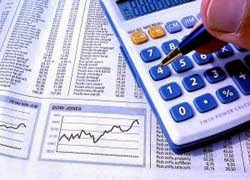Introduction
The Stakeholders of a company will be interested in knowing whether the business has resulted in profit or loss and what the financial position of the company is at a given period. The company can ascertain these by preparing the final accounts. The final accounts are prepared at the end of the year from the trial balance. In this chapter we are going to learn in detail about the preparation of Final accountsWhat are Final Accounts?
The businessman is interested in knowing whether the business has resulted in profit or loss and what the financial position of the business is at a given period. In short, he wants to know the profitability and the financial soundness of the business. The trader can ascertain these by preparing the final accounts. The final accounts are prepared at the end of the year from the trial balance. Hence the trial balance is said to be the connecting link between the ledger accounts and the final accounts.The final Accounts generally include two statements known as balance sheet and income statement which are required for external reporting and also for internal needs of the management like planning, decision-making and control.
Trading and Profit and Loss Accounts (Income statement):
The profit and loss account is the accounting report which summarizes the revenues and expenses and ascertains the profit/loss for a specified accounting period. It also represents the changes in the owner’s equity between two successive periodsBalance Sheet:
The purpose of balance sheet is to show its resources and obligations for acquiring its resources i.e., assets and liabilities. According to American Institute of Public Accountants, balance sheet is “a tabular statement of summary of balances (debits and credits) carried forward after an actual and constructive closing of books of accounts and kept according to principles of Financial Statements of a Company accounting”. Balance sheet is the statement prepared on a particular date and shows classified properties and assets on the right hand side and obligations or liabilities on the left hand sideAssets
Real accounts and Personal accounts (which we have learnt about in the previous chapters) are capable of being called assets. Any element (account) that is capable of being liquidated (that is capable of being converted to cash by giving it away) indicates an asset. Machinery, Furniture, Cash, etc are real accounts that can be called assets. Debtors represent the persons and organizations who owe to the organization. They would clear their dues by paying out either in cash or in some other form. Thus Debtors get liquidated and as such can be called assets.Liabilities
All elements representing liabilities are Personal accounts. An element that is capable of being cleared by paying out indicates a liability.Creditors represent the persons and organization to whom the organization owes. The organization would clear its due by paying them either in cash or in some other form. Thus creditors are cleared by paying out and as such can be called liabilities.
How to enter the entries into Balance sheet and Income statements?
Before learning to enter the accounts into the Income Statement let us first distinguish the entries and learn to enter them into the financial statements.As we know that the ledger accounts maintained within an organizational accounting system are classified into three as Personal, Real and Nominal.
Nominal Accounts
Nominal accounts are related to expenses, losses, incomes and gains. Since ascertaining profits or losses involves dealing with incomes, gains, expenses and losses we can conclude that all the nominal accounts together would give us the information relating to the profits or losses made by the organization.Real Accounts
Real accounts are related to tangible aspects. In general we can identify that all asset accounts are real accounts.Personal Accounts
Personal accounts are related to persons and organizations. These are persons/organization which owe the organization or to whom the organization owes. In effect they either form creditors (liabilities) or debtors (assets).Since all the nominal accounts have been dealt with in deriving the information relating to profits and we are left with only the real and personal accounts which represent either assets or liabilities we can conclude that all the real and personal accounts together give us the information relating to the position of the organization.


















